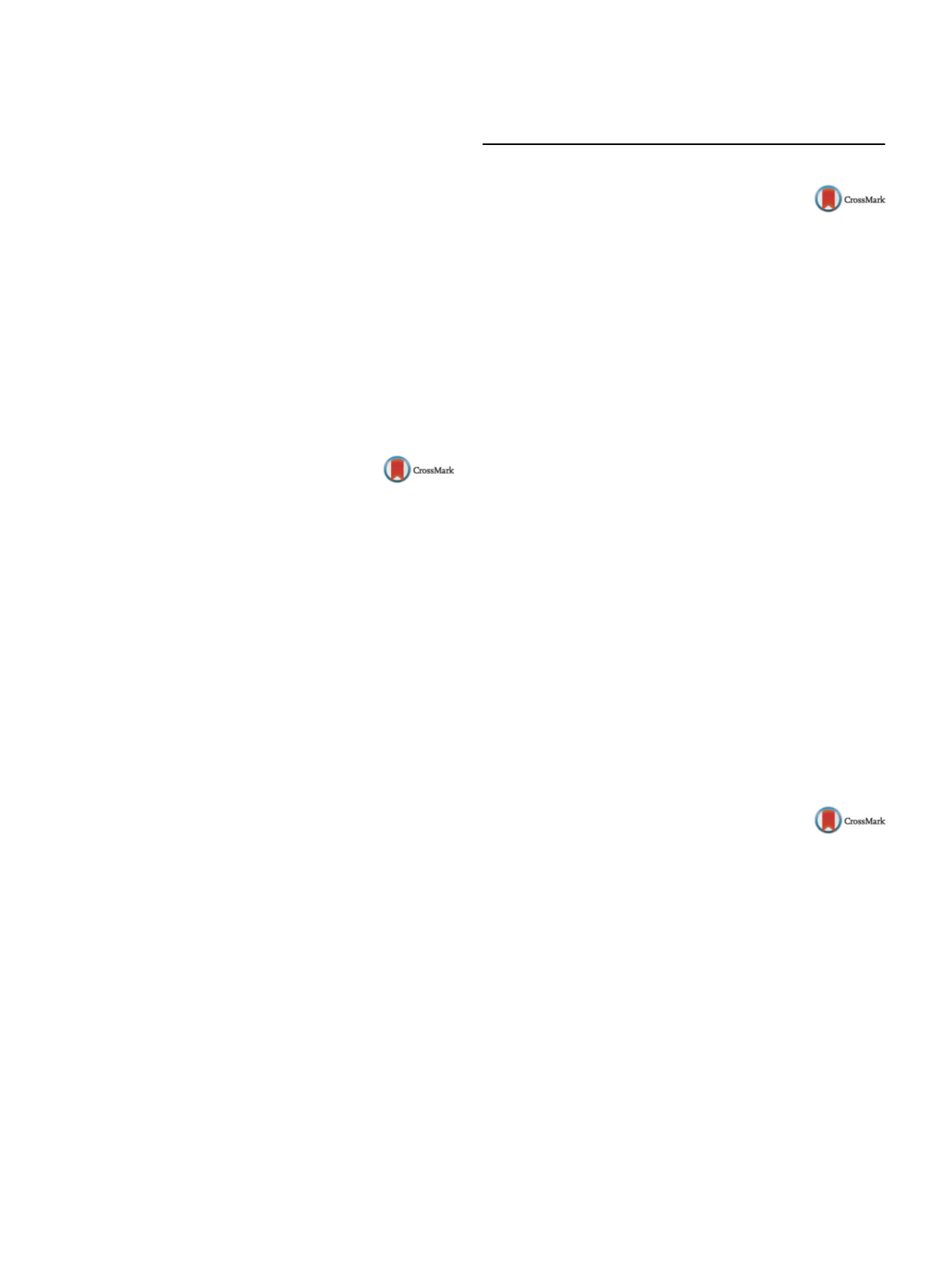

S328
25th European Congress of Psychiatry / European Psychiatry 41S (2017) S303–S364
Aims
To determine whether the choice of anesthetic drugs in the
case of switching influences the effect on the Hamilton depression
rating scale.
Methods
We collected data of patients who received ECT for
therapy resistant depression over the past five years. Choice of
anesthetics, eventually switch and the score on the HDRS before
and after ECT were included. The data was statistical analyzed.
Results
50 patients received ECT during past 5 years. ECT gives
an improvement on the HDRS in all cases, whether there was a
switch or not. Switching from methohexital to ethomidate when
shock duration is less than 21 seconds gives a significant difference
in improvement on the HDRS (BI 1.288 to 13.538) compared to
patients who did not switch.
Conclusions
There are no significant differences on HDRS effect
between the different anesthetics. Switching frommethohexital to
ethomidate gives a significant improvement on HDRS compared
with no switch.
Disclosure of interest
The authors have not supplied their decla-
ration of competing interest.
http://dx.doi.org/10.1016/j.eurpsy.2017.02.261EW0648
Intrinsic functional connectivity of
cortico-basal
ganglia-thalamo-cortical circuitry
underlying psychomotor retardation
in major depressive disorder
Y. Yin
1 ,∗
, Y. Yuan
1, L. Fan
2, C. Xie
3, Z. Zhang
31
Affiliated ZhongDa hospital, institute of neuropsychiatry, Southeast
university, department of psychosomatics and psychiatry, school of
medicine, Nanjing, China
2
Institute of automation, Chinese academy of sciences, Brainnetome
center, Beijing, China
3
ZhongDa hospital, school of medicine, Southeast university,
neurology, Nanjing, China
∗
Corresponding author.
Introduction
Psychomotor retardation (PMR) in depression is
analogous to the hypokinesia in Parkinson’s disease, which is
associated with the unbalanced direct and indirect pathways of
cortico-basal ganglia-thalamo-cortical (CBTC) circuitry. This study
hypothesized PMR in major depressive disorder (MDD) should be
associated with the hyperactivity of CBTC indirect pathways.
Objectives
To substantiate the hypothesis that the PMR symp-
tom of MDDmight attribute to the hyperactivity of the ortico-basal
ganglia-thalamo-cortical indirect pathwaywhich could inhibit psy-
chomotor performance.
Methods
We investigated the intrinsic stiato-subthalamic
nucleus (STN)-thalamic functional connectivity (FC), three pivotal
hubs of the indirect pathway, in 30 MDD patients with PMR
(PMR group) and well matched 30 patients without PMR (NPMR
group) at baseline, and 11 patients of each group at follow-up who
remitted after antidepressant treatment.
Results
The results showed increased STN-striatum FC of PMR
group at baseline and no more discrepancy at follow-up, and signi-
ficant correlation between PMR severity and thalamo-STN FC.
Conclusions
Our findings suggested the increased STN- striatum
FC should be considered as a state biomarker to distinguish MDD
patients with PMR from patients without PMR at acute period, and
thalamo-STN FC could be identified as the predictor of the PMR
severity for MDD patients.
Disclosure of interest
The authors have not supplied their decla-
ration of competing interest.
http://dx.doi.org/10.1016/j.eurpsy.2017.02.262e-Poster Walk: Ethics and psychiatry/Philosophy
and psychiatry/Others–Part 1
EW0649
Is an isolation room harmful to
patients with schizophrenia?:
A biochemical study of salivary
amylase
A. Koreki
∗
, M. Kiyohara , T. Koizumi , M. Onaya
National hospital oganizetion simofusa psychiatric center,
psychiatry, Chiba, Japan
∗
Corresponding author.
Introduction
Some patients with acute phase schizophrenia are
too agitated to receive treatment in a normal hospital room. They
must be isolated for the treatment. Although the stay in an isola-
tion room seems harmful to patients, no study detailing the stress
response to isolation with objective measures has been conducted.
Method
Nine patients with schizophrenia or schizoaffective
disorder were recruited (mean age = 52 years, male = 3, schizophre-
nic = 7). At the time of evaluation, they were staying in an isolation
room. To evaluate stress response to the environment, the level of
salivary amylase was tested when the patients were either in the
isolation room (T1) or out of the isolation room (T2). T2 was defi-
ned as one hour after the room’s door was opened. The data were
analyzed by the Wilcoxon rank-sum test.
Result
There is a significant difference between the median
(range) levels of salivary amylase at T1 and T2 (19 [2–146] vs 44
[9–178], respectively,
P
= 0.021).
Discussion
The data demonstrate that the stress response at T2
was stronger than that at T1, which suggests that the isolation room
environment is less stressful to the patient compared to being out-
side the room. An environment that has many potential stimuli,
such as the presence of other patients and a television in the lobby,
may be harmful to patients with acute phase schizophrenia. The-
refore, although the isolation room is apparently harmful, it could,
in fact, have a positive effect on patients.
Disclosure of interest
The authors have not supplied their decla-
ration of competing interest.
http://dx.doi.org/10.1016/j.eurpsy.2017.02.263EW0650
Outcomes of involuntary hospital
admission. Satisfaction with
treatment and the effect of
involuntary admissions on patients
T. Reshetukha
∗
, N. Alavi , E. Prost , D. Groll , R. Cardy , N. Mofidi ,
P. Wang , C. Patel , S. Sajid
Queen’s university, department of psychiatry, Kingston, Canada
∗
Corresponding author.
Introduction
Involuntary hospitalization in those presumed to be
mentally ill has been a common practice. Although some patients
are hospitalized for aggression, two-thirds of the patients are hos-
pitalized because of the threat they pose to themselves. Although
these patients require risk assessment and evaluation for possible
presence of mental illness, the question is howmuch these patients
will benefit from involuntary admission and what the long-term
outcome would be.
Method
All patients admitted involuntary to the psychiatricward
in Kingston, Canada, and psychiatrists involved in their care were
interviewed to see whether they think the involuntary admission
was helpful. All patients were asked to fill-out MacArthur AES to
assess their satisfaction with hospitalization.
Results
Although psychiatrists frequently reported that the
admission was justified, only 29 out of 81 patients reported being


















